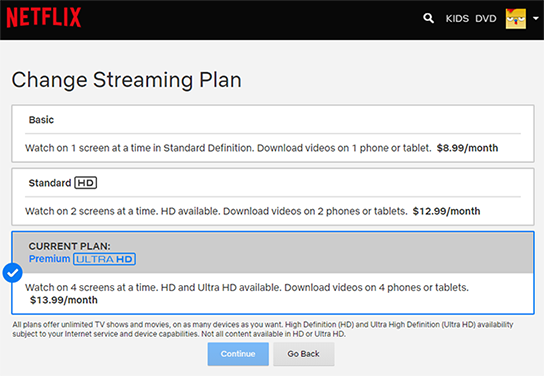Preventable churn is hard to see, creeping around at the edges of day-to-day business and eating up revenue. It’s tricky to catch because:
- Every SaaS (Software as a Service) company expects to experience some level of churn
- Customers churning out don’t directly affect the flow of operations
- Once customers are lost, it can be difficult to find out whether the churn could have been prevented
Most companies have figured out how to fight passive, or involuntary, churn due to failed credit card payments.
Dunning tactics deployed by automated subscription management platforms can warn customers ahead of time about expiring cards, perform automatic payment retries, and send friendly automated emails along the way. These emails gently inform customers about looming expiration dates and card declines and offers them easy solutions to update their payment information.
But what about the other customers who disappear, despite these efforts? You know your churn rate; every company should. Calculating how much of that churn rate is preventable, however, can be difficult.
Here are some signs that you may be losing customers to problems you can fix, and tips to salvage that revenue before it walks out the door.
1. Your team isn’t on the same page
What do your marketing, sales, customer support, and development teams all have in common? Your customer’s best interest, hopefully!
A potential customer’s first interaction with your business is likely with marketing, which creates campaigns ideally targeted to best-fit leads.
How were those best-fit leads decided upon?
Without a clear customer profile to market to, your company risks attracting an audience looking for a product your company doesn’t offer. These new users will eventually churn out, disappointed.
What’s worse, you’ll expend time and money, and potentially rack up bad reviews while getting there. This often compounds to create a problem where onboarding, then losing, a bad-fit customer actually costs the company money.
How does marketing know who to target? By communicating with the development team to understand what the product does and does not offer. By asking customer support what their most common solvable (and unsolvable) pain points are. And by communicating with sales to find out what questions they get asked, what potential customers are looking for, and whether those features belong in marketing and communication campaigns.
At the same time, sales needs the honest answers only development can provide, and must know what the potential customer already assumes from exposure to marketing material.
Development teams can only fix bugs if they know which problems customer support is expending the most effort managing.
It goes on and on, but the bottom line is if your team isn’t on the same page about ideal leads based on what you have to offer, you’re probably paying to onboard, and subsequently lose, bad-fit customers.
2. You’re sacrificing long-term success for short-term goals
If you’re comfortable attracting bad-fit customers to meet short-term new customer acquisition goals, reconsider. In one case, just three “bad-fit” customers cost a company $1.2 million. These customers, who were known to not be good technology fits, signed up for $25,000 recurring annual deals—$75,000 a year total.
When they inevitably cancelled, the costs associated with customer acquisition, additional lost customers due to negative reviews, and the eventual effect on the company’s overall valuation were more than $75,000.
And this was $75k the company did not get to keep, by the way.
This type of situation can play out in many arenas, and it’s entirely preventable. Recurring billing platforms can use cohorts to monitor sales and control this churn.
Similarly, if you’re upselling customers on features they don’t need, you’re doing your customers—and business—a disservice. It’s even worse if you trim your most affordable offerings so much that customers are forced to buy more premium subscriptions. More money now does not necessarily mean more money later, especially when customers leave because they feel cheated.
Netflix recently created a stir with its decision to raise subscription prices for all three of their tiered plans. Some surveys found that up to 16% of subscribers might cancel or downgrade the service due to the change. If true, and with competitors waiting in the wings, this could be a costly mistake for Netflix. But if Netflix has carefully calculated this short-term risk, the 18% price increase on their most popular plan could pay off in a big way.
Netflix’s pricing has long been an example of tiered pricing done right:

Three plans, simple and clear features, each one offering value. Despite the single screen and standard definition of the first tier, the user still has access to all of Netflix’s commercial-free and downloadable content: no skimping.
The features of the premium plan (shown here with the old price of $13.99, but now $15.99), are clearly directed at target audiences—families who have more screens, or users who value Ultra HD.
Put customers first, offer value, and be clear about what you do (and don’t) provide. These strategies will help you attract and keep your best customers. As they grow, they’ll likely need to upgrade their plans, meaning their growth becomes yours.
3. Your reactive strategies outnumber your proactive ones
Feel like you’re spending too much time trying to salvage situations with unhappy customers? It might be time to consider whether you’re doing enough to keep them happy in the first place.
Many SaaS businesses work to create a “sticky” relationship with their customers. This is good; it demonstrates that customers are connected to your product and are likely to stick around, even if prices go up. Their loyalty means they’ll stay even if competitors have lower prices, especially if they’ve already integrated your software into their everyday usage.
Spotify is a great example of “stickiness” built into a platform. Canceling your Spotify subscription means giving up all of the personal playlists you created. Most Spotify users (and users of other music platforms) stick with their service because they don’t want to lose access to “their” music.
So how do services like Spotify avoid going the way of Sony’s SonicStage program? Similar to Spotify or iTunes, SonicStage used a “sticky” file format unique to Sony in the early 2000s: The ATRAC files were only playable on ATRAC Sony devices. Yet today, ATRAC and SonicStage are tiny blips in music storage history; the sticky format didn’t save them.
Where did Sony go wrong? Long story short, they lost to iTunes. Being more user-friendly, using inclusive marketing, and having an unbeatable customer support team meant iTunes rose to the top and SonicStage fell to the wayside.
How do you avoid the SonicStage story? Through a strategy that combines multiple tactics that work for your business. Whether through cohorts, customer road maps, or any other number of proactive instead of reactive efforts which robust subscription management platforms support, customer retention is possible.
4. You aren’t tracking the customer experience
If you’re unaware of how exactly your customers are interacting with your product, it’s hard to be aware of where things are going wrong.
The journey a customer takes from the moment they learn about a service, to deciding to purchase, to first usage and beyond is made up of important decisions and feelings. It’s where the rubber meets the road, in terms of how the customer’s expectations are met along the many points on the way.
Knowing what a potential or current customer is likely feeling every step of the way, and letting that knowledge shape communications and interactions, is key to making a user feel empathized with and understood. That human connection within technology makes all the difference in customer retention.
This is where customer road maps come in handy.
Once you understand the customer journey, and can pinpoint the moments where your users will stop to consider whether your service is worth the price, you’ll likely find places where you can increase customer engagement.
Could you be a little more hands-on with your onboarding process? Offer live chat support, or a support community? These little engagements go a long way to create buy-in from customers.
If you’re unsure of what your customer road map looks like, or where improvements to your service can be made, there are ways to learn more about their experience.
Experience Sampling Method research, A/B testing, Fake-door testing, and/or Concierge MVPs all offer windows into what your customers are doing and what they are interested in. This not only tells you where they are, but also where you should go next with your service, taking your customers along for the ride.
Churn Will Happen…
… but it isn’t the end of the world. The good news is that even a lost customer is a chance to improve your business. You can easily create automatic exit surveys that pop up before a user finally cancels their subscription. Surveying cancelling users to find out the cause of their exit means gaining yet another window into the user experience and possible areas for improvement. The more you know, the more you can shape your business for success.







